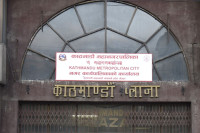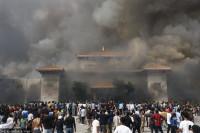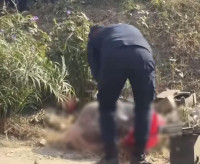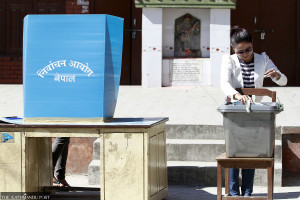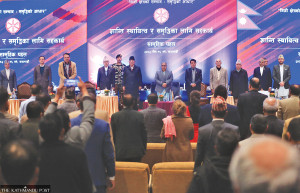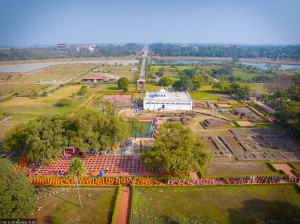Valley
Heritage sites face air pollution threat
The renowned heritage sites across the Kathmandu Valley, many of which are already listed as endangered by Unesco, face a new threat from air pollution, conservationists and craftsmen have warned.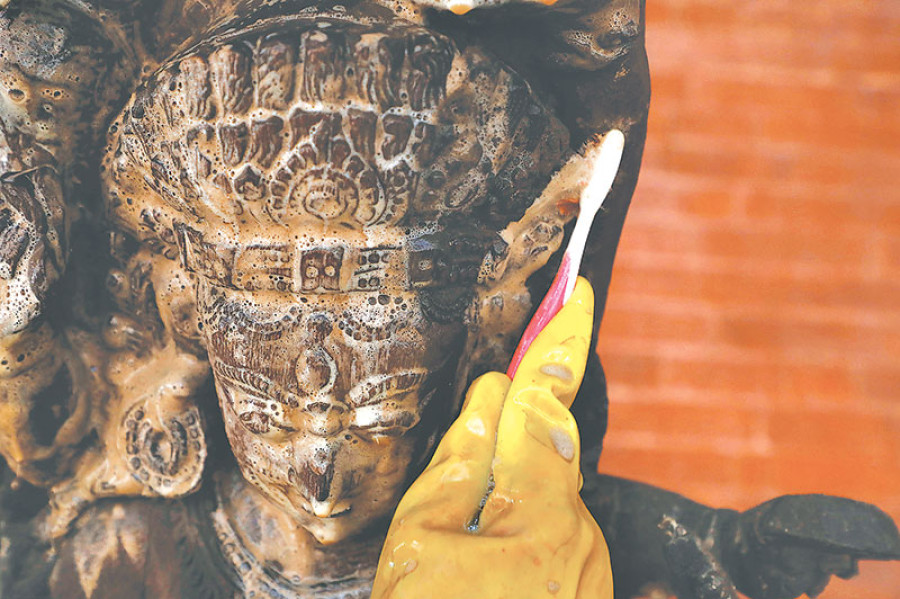
Arpan Shrestha
The renowned heritage sites across the Kathmandu Valley, many of which are already listed as endangered by Unesco, face a new threat from air pollution, conservationists and craftsmen have warned.
“Post-earthquake, we’ve had an opportunity to inspect the ancient structures up close and the degradation is visible. Dust and smoke have deteriorated wooden structures and have blackened the exteriors,” says Rabindra Puri, a leading conservationist who has renovated historic buildings.
“There are thick layers of dust which prevent the structures from moisture management. One can literally scratch it off. The Department of Archaeology, which is equipped with a laboratory should study the chemical effects of carbon on wood and should apply indigenous methods of weatherproofing and carry out routine maintenance to extend durability,” he added.
The historical wooden structures, traditionally made of dhunsi or dhasi wood, fetched for their extreme durability, have stood for centuries and are praised for the indigenous system of engineering and intricate ornamentation. Dust, smoke, unscientific alterations and other modern-day consequences, experts say, were never considered by the artists who conceived them.
At the Bhandarkhal Garden and actual temple sites in the Patan Durbar Square, where a handful of artists and carpenters are working to restore what’s possible from the remains of the earthquake incurred damages, the deterioration on wooden structures due to age, dust, and smoke is visible.
“They used paint on Changu Narayan Mandir and even on the Nyatapola on various occasions. It’s just careless. It prevents the wooden structure from breathing,” conservation architect Bijay Basukala told the Post as he made his way on a shaky catwalk atop the Vishwanath temple, where workers were washing off the remaining residue after scraping off thick layers of dust.
“Irregular cleaning or lack thereof has resulted in heavy deposits of dust and moisture. It took us an entire day of painstaking cleaning for just this portion of the temple. Look at the blackened portions,” he said.
Valley’s ancient heritage sites are a major tourist attraction and continue to marvel architects, archaeologists and anthropologists from around the world but it’s not just the ancient structures that face threats. Residential homes, patis, falchaas, and monuments, most of which are historic and scattered across the early settlements in the Valley also face the same risks.
“There is yet to be a study on how pollution affects these wooden structures, but its effects are inevitable. If designated institutions carry out routine structural maintenance as opposed to just cosmetic treatment or beautification, the damages could be minimised,” says Rohit K Rajkarnikar, country director at Kathmandu Valley Preservation Trust, an international private non-profit dedicated to safeguarding Nepal’s architectural heritage.
“Ancestral architectural skills should be adhered during maintenance, even for residential homes. Artisans back then paid keen attention to air-circulation
and damp-proofing the structures. The base floor is vacated for air circulation while the roof structures are designed in a manner to protect the wooden structures from the rain. These key principles should be kept intact,” he added.




 5.05°C Kathmandu
5.05°C Kathmandu

